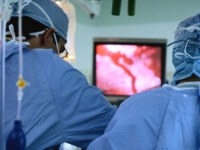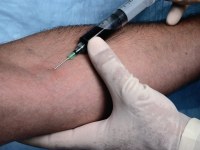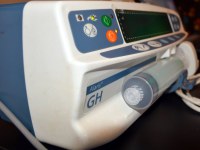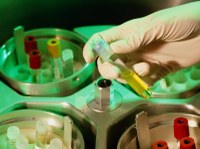Platform developed by INESC TEC enables personalised drug administration during anaesthesia
The prototype is being tested in two hospitals in Porto, Portugal
GALENO is the name of the new tool that enables a strict and personalised administration of drugs and it was developed by a consortium that includes INESC TEC’s Laboratory of Artificial Intelligence and Decision Support (LIAAD). The platform is a result of a project with the same name (GALENO – Modelling and Control for Personalised Drug Administration), which was concluded last year, and is now being tested in two public hospitals in the city of Porto. The team, which has been studying this area for the last 15 years, is now developing new theoretical and practical results to apply in a clinical environment.


GALENO uses modelling, estimation and control strategies and alarm systems
When administering drugs under general anaesthesia (whether for surgery or any type of clinical procedure), anaesthesiologists analyse several of the patients’ physiological data and features, but it is their experience and the right dosage, based on the average population method published in the literature, that indicate the amount of drugs that should be administered in each situation. For that reason, anaesthesiologists believe that it is necessary to have a personalised support system.
It was for that reason that in 2010 the GALENO project started and the goal was to develop a system based on modelling strategies and control algorithms that can be used to administer drugs individually. This research was conducted with the support of LIAAD in the component of alarm systems. The team of researchers, composed of João Gama and Raquel Sebastião, developed the “algorithm OLARD – OnLine tuned Algorithm for Recovery Detection – in order to detect in real time the point of recovery from a neuromuscular blockade after the drug is initially administered. In the component of changes in the depth of anaesthesia, the researchers used forgetting mechanisms in an algorithm that detects changes and identifies variations in the bispectral index,” explained Raquel Sebastião.


Other than INESC TEC, the GALENO project, proposed by the Faculty of Science of the University of Porto (FCUP), other partners included the Center for Research & Development in Mathematics and Applications (CIDMA-UA), the Institute for Systems and Computer Engineering, Research and Development in Lisbon (INESC ID), as well as the Santo António Hospital (hospital centre in Porto), and the Pedro Hispano Hospital (local healthcare unit) in Matosinhos.
For the GALENO platform, the researchers developed new models to administer drugs under general anaesthesia, namely to control neuromuscular blockades and the depth of anaesthesia. “The GALENO platform, dedicated to administering drugs in simulation studies and in a clinical environment, integrates these models as well as control algorithms previously developed, and alarm systems,” the LIAAD researcher added.


The Santo António and Pedro Hispano Hospitals are already using this tool
At this moment, the prototype is being tested on a regular basis in the operating rooms of the Santo António and Pedro Hispano Hospitals in general anaesthesia procedures, and the different components and potentialities are being validated by the physicians. The tool is not yet concluded, and it can be “improved by adding new control models and algorithms,” Raquel Sebastião added.
The expectation is that the platform captures the interest of the clinical staff, so that “it can be implemented in modules for different applications,” the researcher reveals. Furthermore, the GALENO is ready to be used by other research groups that want to test their own models and controllers in a simulation. “Considering the methodology followed, the GALENO platform can easily be adapted to sedation or intensive care cases,” Raquel Sebastião explained.


Even though the project, financed by the Fundação para a Ciência e a Tecnologia (Portuguese funding agency), is concluded, some of the elements that took part in the team are continuing the research on modelling, intra and inter individual variability of the patients, as well as on robust control algorithms for clinical environments.
The INESC TEC researchers mentioned in this article are associated with the following partner institution: FEP.


